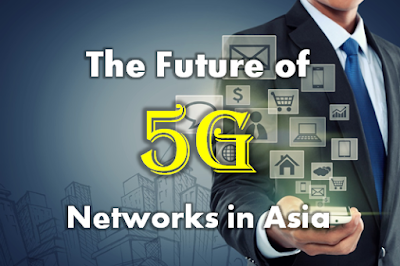Future of 5G Network
5G is about enhanced mobile broadband, requiring much greater throughput than 3G or 4G.'
According the latest study by GSM Alliance, there would be 670 million 5G subscribers (excluding IoT connections) in Asia Pacific by 2025, or 60 per cent of all 5G connections by then. Frost & Sullivan estimates that 5G service revenue in Asia-Pacific will reach US$4.50 billion by 2022. Some say that Asia Pacific is leading in the race of 5G compared to other parts of the world, with South Korea working towards early deployment of 5G for the PyeongChang Winter Olympics next year, and the Japanese providers have the opportunity to showcase full-fledged 5G at the 2020 Olympics in Tokyo. With no doubt, operators in Asia are actively conducting research and development on 5G. It is said that Asia Pacific operators accounted for four of the six fastest pre-standard 5G lab tests announced to date
When we talk about 5G being a network of networks, one of those networks is LTE. Today’s evolved LTE network is going to be a cornerstone in 5G’s network of networks. LTE will be the workhorse of the wireless industry for many years to come. We’re going to see incremental improvements in LTE capabilities on the way to 5G, and 4G, 5G and Wi-Fi will all coexist—along with some earlier wireless air-interfaces depending on the region. Mobile network operators (MNOs) will use slices of different networks to address different applications and provide connectivity resources to them.
To service Internet of Things (IoT) use cases for 5G such as augmented driving and the tactile Internet, cloud-computing capabilities are needed at the edge of the mobile network. Mobile Edge Computing (MEC) architecture is being integrated into the 5G vision. MEC involves many smaller data centers distributed closer to the cell sites, forming an edge cloud where intelligence can be placed closer to devices and machines. MNOs will need the ability to turn up data centers in a short amount of time with high-density, high-speed solutions that are easy to install and quick to deploy.
As always, MNOs need to design and deploy network equipment for optimal performance. On a general level, this means increased efficiency throughout the converged network—from spectrum efficiency to implementation of virtualized load-balancing, and from space-efficient small cells to energy-efficient backhaul.
Like the journeys to 3G and 4G, the quality of the RF path will be critical in the arrival of 5G. The level of noise and interference in a wireless network strongly determines the data throughput. To this end, operators must focus on ensuring a clean RF path as they densify, virtualize and optimize their networks. The bridge to 5G will include the evolution of LTE, and 5G will only succeed in applications where it can offer significant advantages over LTE.














No comments:
Post a Comment